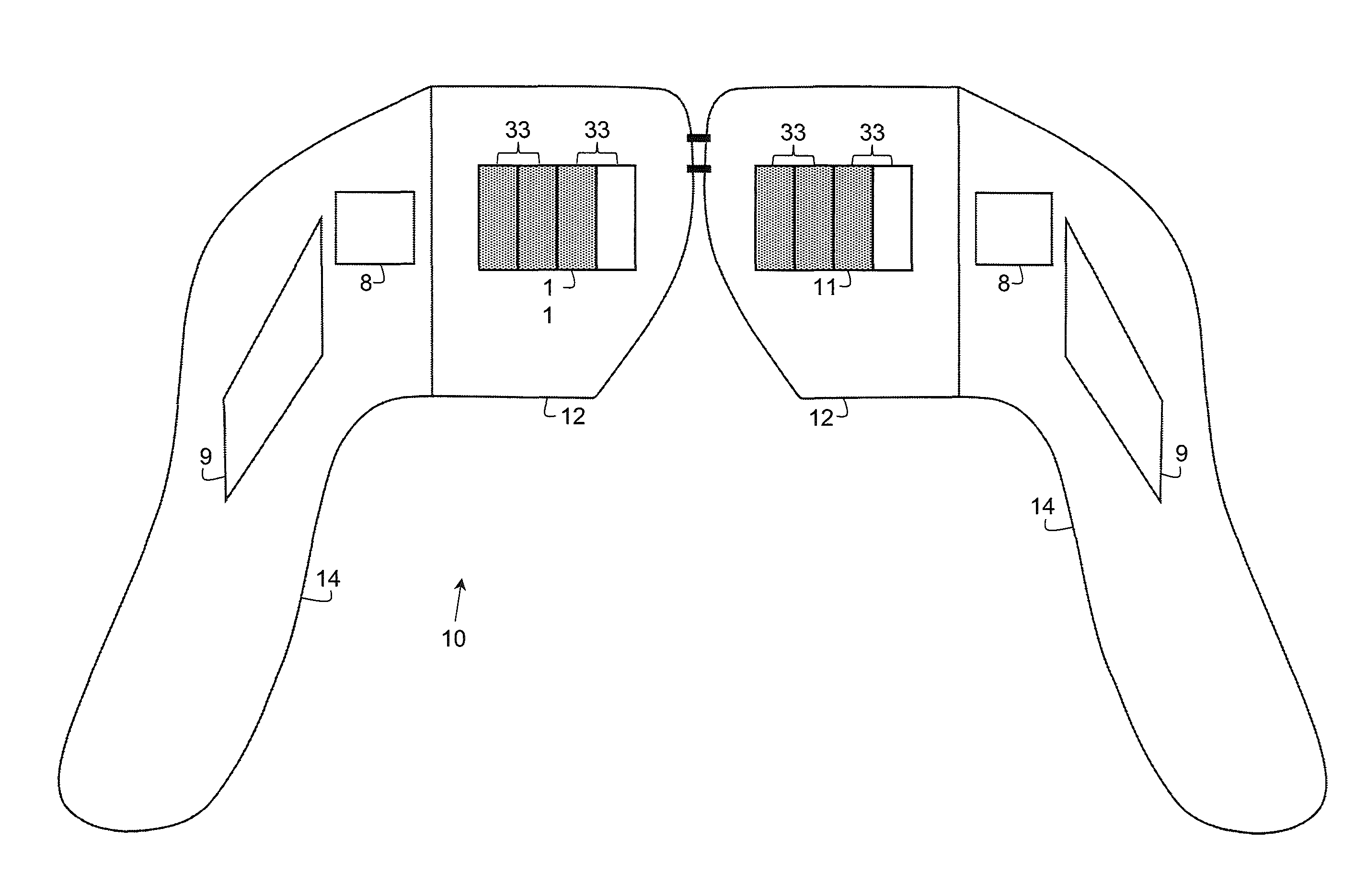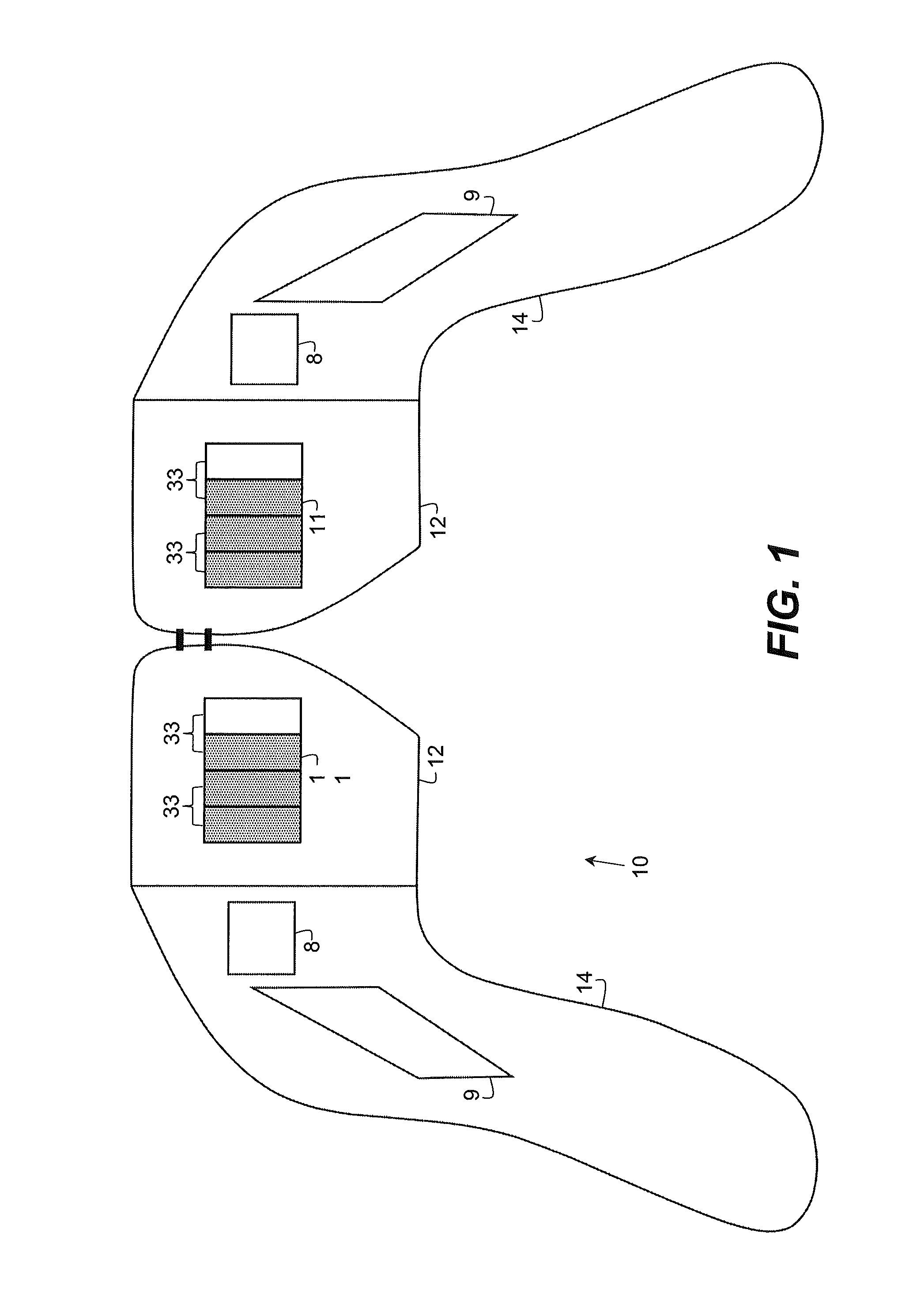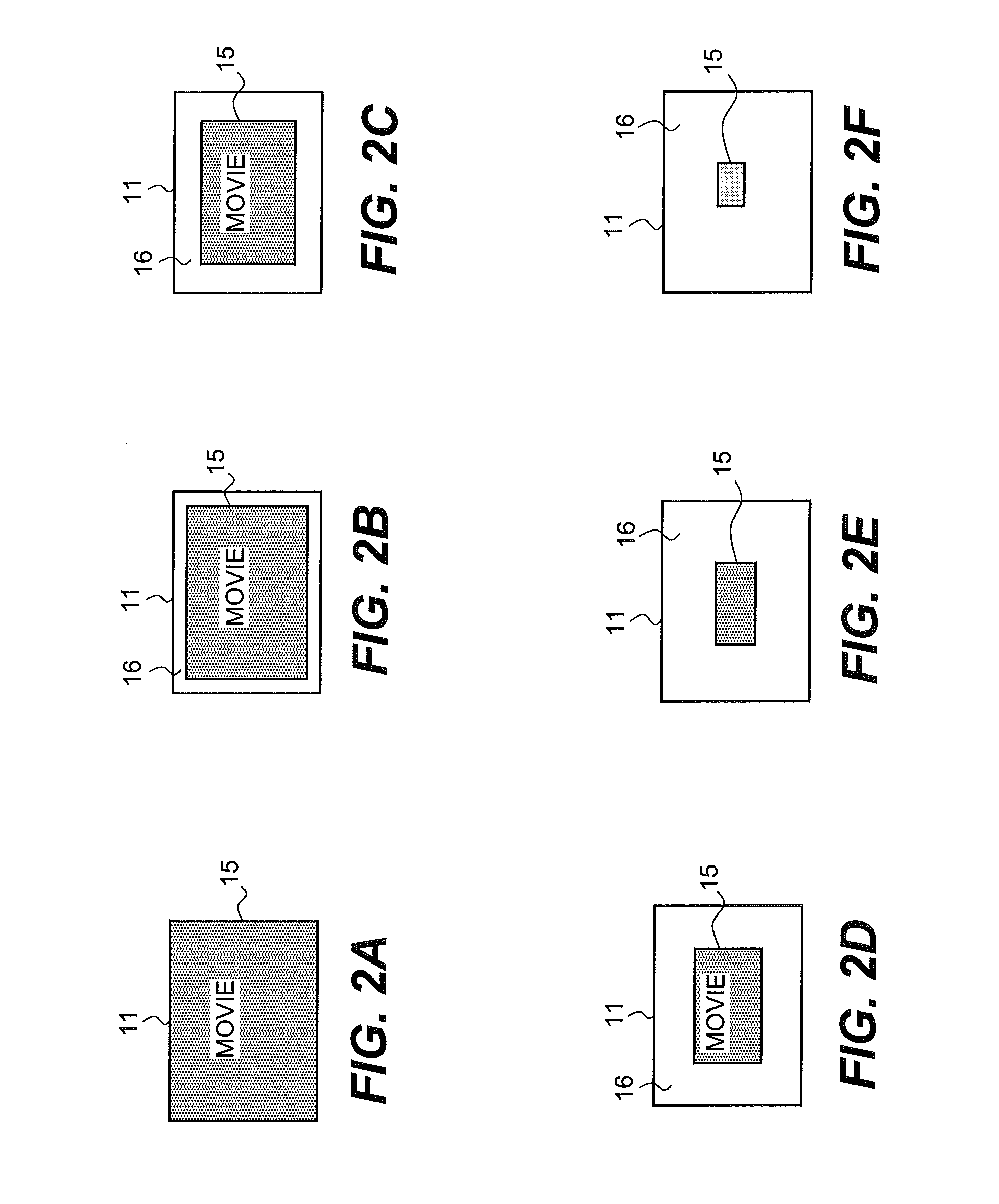Head-mounted display control with image-content analysis
a display and content technology, applied in the field of head-mounted displays, can solve the problems of limiting their widespread adoption, affecting the viewing comfort of users, and affecting the use of the display, so as to reduce the propensity for image-sequence information, reduce motion sickness, and improve the effect of viewing comfor
- Summary
- Abstract
- Description
- Claims
- Application Information
AI Technical Summary
Benefits of technology
Problems solved by technology
Method used
Image
Examples
Embodiment Construction
[0047]A wide variety of head-mounted displays are known in the art. The head-mounted displays include a microprojector or image scanner to provide image information, relay optics to focus and transport the light of the image information to the display device and a display device that is viewable by the user's eyes. Head-mounted displays can provide image information to one eye of the user or both eyes of the user. Head-mounted displays that present image information to both eyes of the user can have one or two microprojectors. Monoscopic viewing in which the same image information is presented to both eyes is done with head-mounted displays that have one or two microprojectors. Stereoscopic viewing typically requires a head-mounted display that has two microprojectors.
[0048]The microprojectors include image sources to provide the image information to the head-mounted display. A variety of image sources are known in the art including, for example, organic light-emitting diode (OLED) ...
PUM
 Login to View More
Login to View More Abstract
Description
Claims
Application Information
 Login to View More
Login to View More - R&D
- Intellectual Property
- Life Sciences
- Materials
- Tech Scout
- Unparalleled Data Quality
- Higher Quality Content
- 60% Fewer Hallucinations
Browse by: Latest US Patents, China's latest patents, Technical Efficacy Thesaurus, Application Domain, Technology Topic, Popular Technical Reports.
© 2025 PatSnap. All rights reserved.Legal|Privacy policy|Modern Slavery Act Transparency Statement|Sitemap|About US| Contact US: help@patsnap.com



